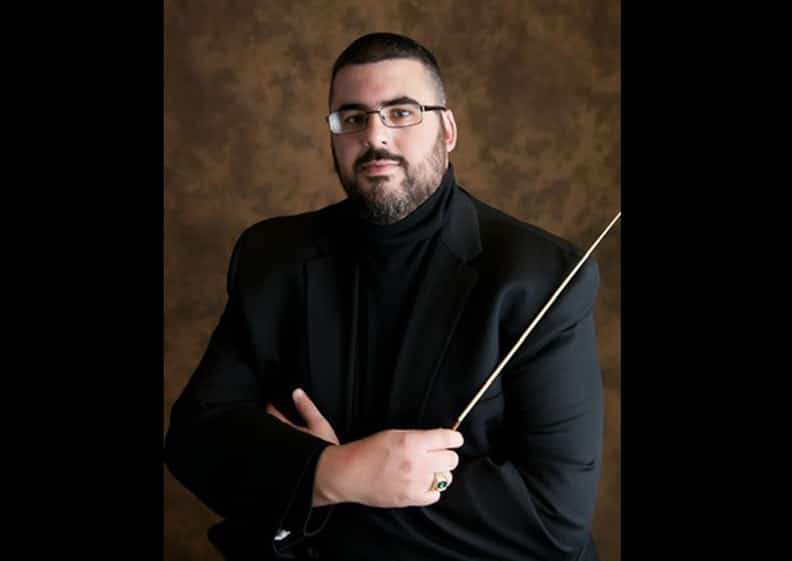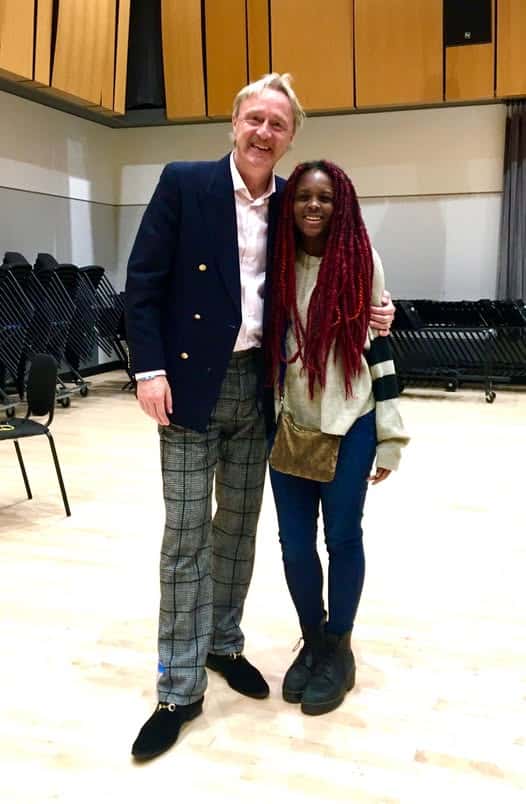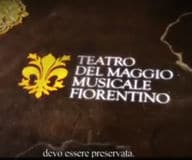Artists who fool you on record
mainA senior record producer Gilbert Hetherwick has broken cover on the tricks classical artists get up to in studio to make us think them immaculate.
Hetherwick, former president of Sony/BMG Masterworks, now has a small studio near Woodstock, NY, where he tries to do things right.

He calls his blog the Grouse House Gazette and welcomes regular visits from great black American bears, drawing the line at music-biz snakes.
Here’s a section of his article, transplanted with permission. It makes sobering reading for anyone who believe that classical record stars are made in heaven.

I once saw a producer suffer through making over
1200 edits in a 60-minute recording by a world
famous classical instrumentalist. They were
literally taking the “attack” of one note and editing
it to the decay of another from the artist’s hand
written instructions on the score. And I have seen
artists nearly lose their recording contracts because
their insistence on heavy editting had driven up the
costs of making their recordings to a point where
they would never turn any kind of a profit. And
even “Live” concert recordings are corrected today,
as there is usually what is called a “patch session”
done later (or the next day) to make sure that all the
correct notes are covered.
With thirty years of digital recording now behind
us we now have an entire generation of classical
artists who don’t know any other way. So
chances are, things won’t change much in the
future. But as the major labels generally back
away from doing many new classical recordings,
and more and more artists are now taking on the
recording responsibilities themselves, the
expense of these postproduction costs are waking
a lot of them up to these expensive time
consuming realities. And the smaller indie labels
that now dominate the market don’t have the
budgets that the majors once had.
So hopefully we will get back to more “honest”
classical recordings in the future.
But the “digital addiction” will be hard to kick…
More here.





I’m an amateur organist who recorded 40 minutes of organ music, some of it thorny and technically difficult stuff by composers I know, and it was done in two hours. The resulting CD has only one splice. Maybe I should have had a career…?
I have recorded and edited a lot of commercial classical recordings. There is no particular pattern to high expectations of editing. Some artists hate it and will not put up with it. In my experience, sometimes excesses are driven by control-room producers pursuing their idea of ‘perfection’. Sometimes they are driven by vain artists who believe the only difference between their talent and those of Heifetz, Richter, Furtwangler or Domingo is down to another couple of dozen edits or a choice of a different microphone to beef them up.
One irony is that recordings of historically great artists such as those above have usually far fewer edits than modern CDs. Another irony is that many modern so-called ‘live’ CDs have many, many more edits than studio CDs and a lot more glaring control-room intervention such as coarse mixing and tasteless globs of artificial reverberation sounding like no concert hall on the planet.
It is just a sign of the times. How many photographs can you believe at face value now we have Photoshop? An Elizabeth Taylor never needed the treatment a Katie Price gets. The recording industry attracts a different kind of artist a lot of the time – those who love the ability of technology to be abused to make them something they are not and probably never shall be.
I have been doing choral singing for about 50 years now. About 30 years ago, we did a recording of about 75 minutes worth of music. We sang everything twice through in one day. For the recording, the director chose either the first take or the second take.
About 10 years ago, I participated in a different recording of a piece that lasts about 7-8 minutes. In the 4-hour recording session, we never once sang through the entire piece, but the final recording was wonderful and we were told “the chorus never sounded better”.
This may be true for Audio-CD, in the DVD production process this is definitely not the case, you cannot splice 1200 edits within a symphony or opera, it would fall apart totally imagewise.
DVD and Bluray are very “honest” in this respect, for an opera normally one has 2 recordings, maybe 3, one of them is the main “take” and any mistakes are inserted from the other recordings.
CDs in classical music are no business model for musicians nowadays, they document a performance and can be used for PR purposes.
One has to acknowledge that Audio-CD is not a mass market anymore, with very few exceptions. Selling 1500 – 2000 CDs of a title worldwide (with a few exceptions) is nowhere near what it used to be. Mr. Lebrecht, are my numbers correct ??
“The party is over”….Mr. Lebrecht was a visionary when he wrote his book on the industry many years ago.
There’s a wider issue here about what is “acceptable” (and in whose eyes?) by way of editing – the debate over whether a recording should purport to showcase an artistes genuine ability to perform live (totally aside form the fact that performing live and in a recording are two entirely different things, and some artists are good at either but not both) or whether, in fact, the purpose of a recording is to put across an artists vision of the composer’s work – their musical interpretation – and if extensive editing aids this goal, then why not?
However, those debates aside, I take issue with the factual nature raised of costs, and the description of “editing the attack of one note into the decay of another”, which is so phrased as to engender outrage. In the latter case, editing the attack-of-one-to-the-decay-of-anoth is, broadly, how editing actually works (or the decay of one into the attack of the next, or gently crossfading between two decays, or…) There’s nothing wrong at all with that; that’s editing, full stop.
Cost-wise, the cost of doing 1200 edits in a 60 min disc (far from uncommon) are rather more than the cost of a lesser number of edits, for sure. [most production contracts are erring towards fixed-fee these days anyway, so it costs no less and no more to the label however many edits the artist desires] But in the context of what a disc costs to record, manufacture, and promote, the editing bill is inconsequential. For a classical disc to be “profitable” in any meaningful sense of the word, it must sell several 10’s of thousands of copies. By this stage, the costs of a bunch of extra edits are neither here nor there (and if they help the record sell, or help it achieve great reviews, then very much worth every cent).
A recording is a genre in itself and has never been as closely related to “performance” as we would like to believe. An interesting example is how early recordings from the 78 rpm era would sometimes replace the contrabass with a tuba since that was the only way the engineers could pick up an adequate low sound. Recordings are closer to a form of electronic music than performance and always have been. Today’s digital editing practices are merely the logical evolution of what has always been merely the electronic emulation of performance. In our dying culture, Artifice is Truth. Leaving the clams in won’t change much.
P.S. Were you trying to show us that Mr. Bear could be Gilbert’s cross-species twin brother? A comment on the music industry? Very funny.